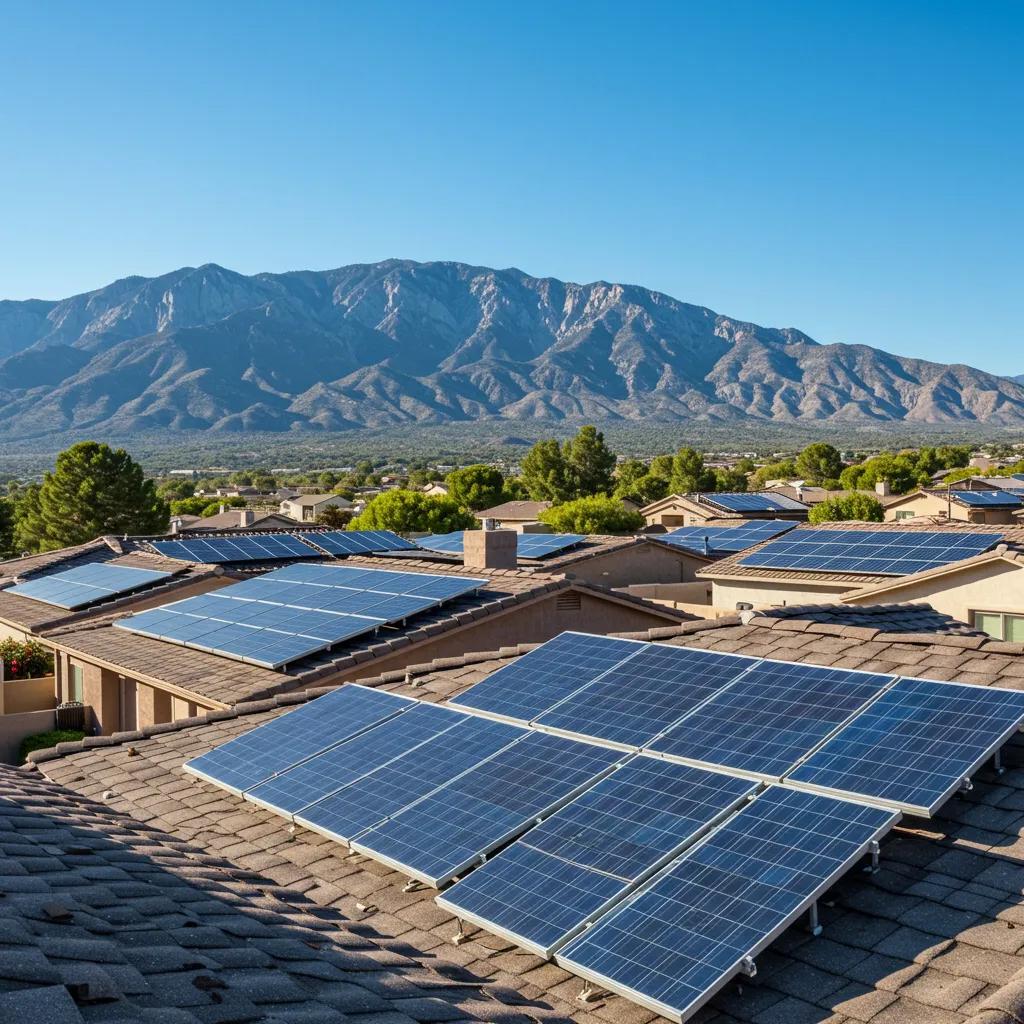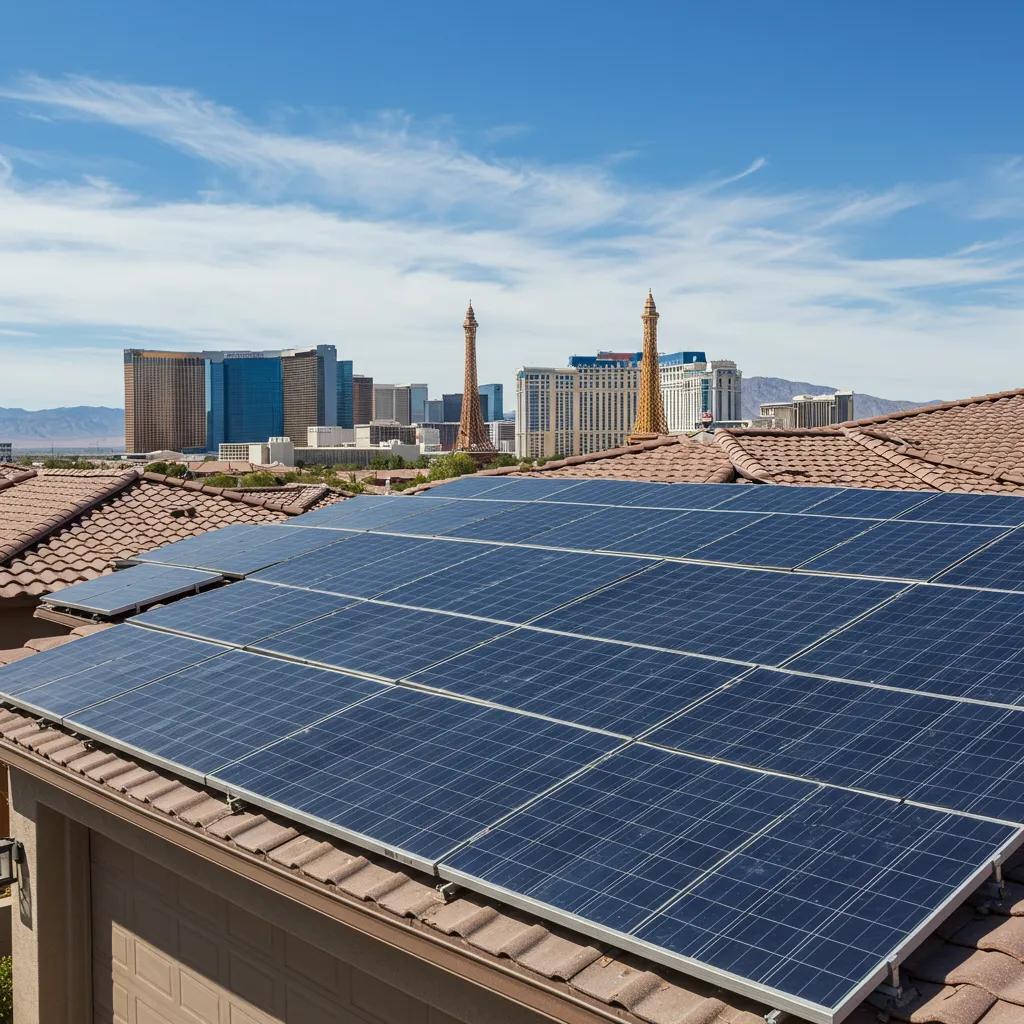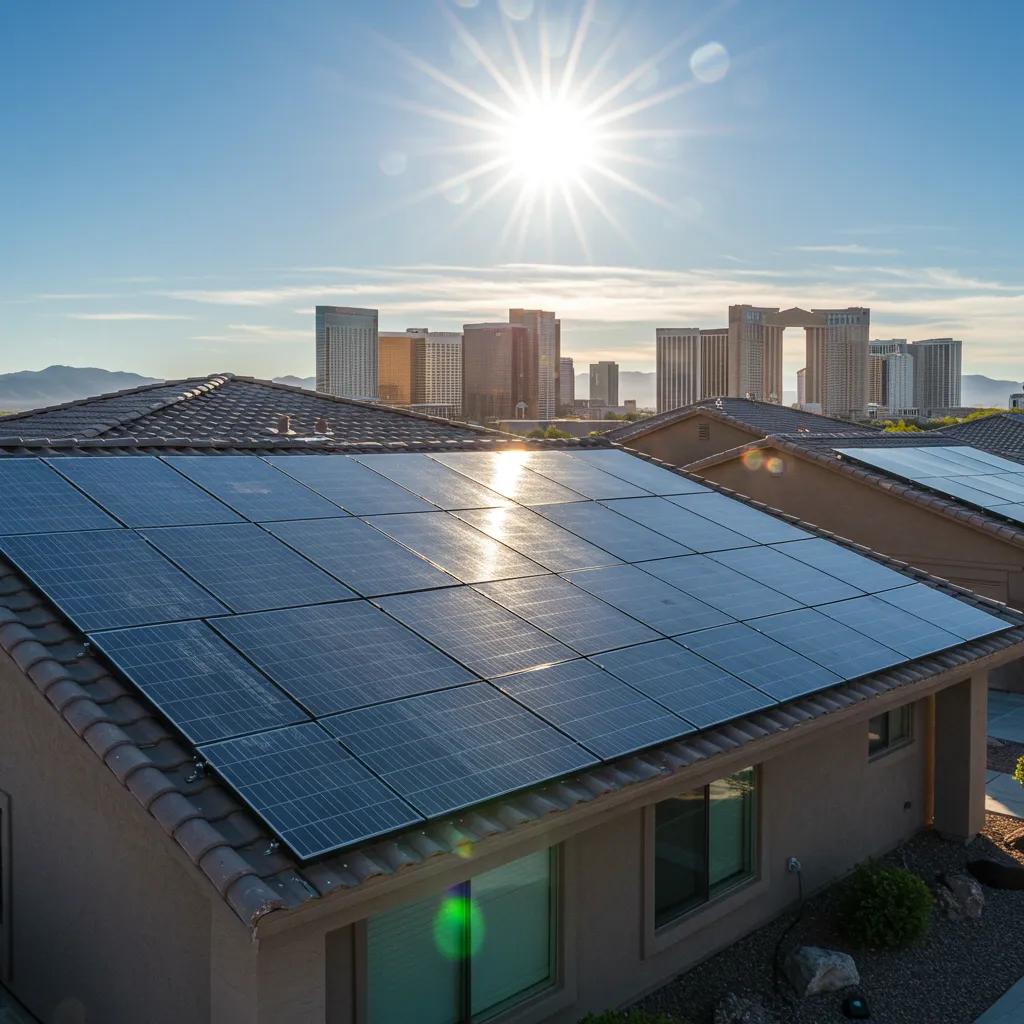NevadaSolar Incentives 2025: Your Guide to Renewable Energy Savings for Homes and Businesses
Nevada‘s incredible solar potential and ever-evolving energy policies mean understanding the latest Nevadasolar incentives is crucial for anyone looking to install solar in 2025. This guide breaks down federal and state incentives, NV Energy‘s net metering rules, commercial financing options, and the practical steps you need to take. We’ll help you figure out your potential savings, ensure you meet all requirements, and choose the perfect time to go solar. Discover key programs like the Residential Clean Energy Credit, the Renewable Energy Tax Abatement (RETA), and NV Energy‘s storage incentives, and see how they all add up to boost your project’s returns. Inside, you’ll find real-world examples, checklists, utility-specific advice, step-by-step application guides, and clear actions to lock in the full 2025 federal credit. We cover federal incentives, Nevada state programs, NV Energy net metering details, the specific benefits for Las Vegas properties, commercial financing and incentives, how to apply, and what’s next for Nevada‘s energy policies. We’ll use terms like “Nevadasolar incentives,” “NV Energy net metering,” and “federal solar tax creditNevada 2025″ to make sure you have the information you need to act now.
What Are the Top Federal Solar Incentives Available in Nevada for 2025?
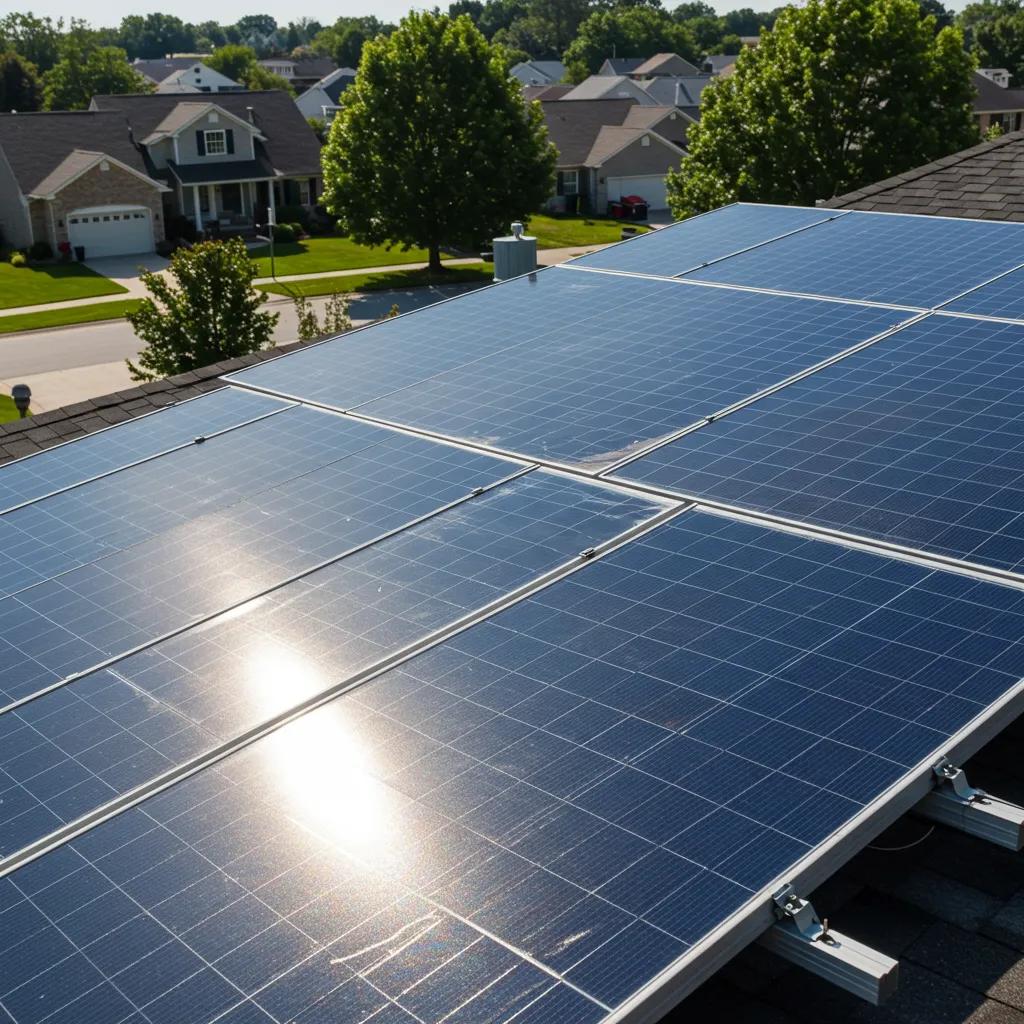
Federal incentives are a major factor in making solar projects financially viable. They directly reduce your upfront costs and improve your project’s cash flow through tax credits and depreciation. The Residential Clean Energy Credit (often called the federal ITC) offers a percentage-based credit on eligible solar and storage system costs, directly lowering your tax bill and increasing your project’s net present value. Businesses can also combine this credit with accelerated depreciation (MACRS) for even greater first-year tax benefits, boosting ROI and shortening payback periods. Understanding how these federal benefits work alongside Nevada‘s own programs is key to timing your installation and ensuring you qualify.
How Does the 30 Percent Federal Residential Clean Energy Credit Work?
The Residential Clean Energy Credit allows you to deduct a percentage of your eligible system costs directly from your federal taxes, effectively lowering the net price of your solar installation. This includes costs for solar panels, inverters, mounting equipment, and qualifying battery storage systems that meet specific co-location rules. It’s a direct reduction of your tax liability, not a cash rebate. For example, a $20,000 system eligible for the 30 percent credit would result in a $6,000 tax credit, significantly reducing your out-of-pocket expense and improving your payback timeline. To claim this credit, make sure you keep detailed records of your purchase invoices, installation dates, and equipment specifications.
Who Qualifies for the Federal Solar Tax Credit in Nevada?
To qualify for the Residential Clean Energy Credit, you generally need to own the solar system and have it installed on your primary or secondary residence. If you lease your system, the leasing company is typically the one who claims the credit. While homeowners can claim this credit for their residences, commercial projects have different federal incentives available, often combined with MACRS depreciation. If you’re a renter, the third-party owner of the system will claim the credits. It’s essential to carefully review your contracts and ownership documents to determine who is eligible to claim the credit.
What Is the Deadline for Claiming the Federal Solar Tax Credit?
The crucial deadline for claiming the full 30 percent Residential Clean Energy Credit is for systems that are “placed in service” by the end of 2025. “Placed in service” means your system is fully operational and ready to generate power. Make sure to document your final inspection date, utility interconnection confirmation, and system commissioning records to prove your placed-in-service date. Homeowners and businesses should plan their installation timelines carefully, coordinating with installers and local permitting offices to avoid any delays that could push your project past this important deadline and potentially reduce your credit value.
How to Apply for the Federal Solar Tax Credit in Nevada?
Claiming the federal solar tax credit involves filling out the correct IRS forms and keeping thorough records of your eligible expenses and the date your system was placed in service. You’ll typically use the IRS form designated for residential energy credits when filing your annual taxes. Start by gathering all your invoices, equipment details, interconnection agreements, and any documentation from your installer that outlines eligible costs and installation dates. It’s highly recommended to consult with a tax professional to ensure you’re maximizing the credit‘s benefits, especially when combining it with state incentives or for commercial projects utilizing MACRS. Your installer can often provide a comprehensive documentation package to simplify the tax filing process.
Which Nevada State Solar Incentive Programs Can Homeowners and Businesses Use?
Nevada‘s state-level programs offer additional benefits that complement federal incentives, including tax abatements, grants, and specific incentives for energy storage, tailored for both residential and commercial customers. Key programs include the Renewable Energy Tax Abatement (RETA) for businesses, the NevadaSolar for All program designed to help low-income households, and various state and utility initiatives that support energy storage paired with solar. These programs can often be combined with the federal credit, but each has its own specific eligibility criteria and application procedures. Understanding these details is vital for maximizing your project’s overall value in areas like Las Vegas and Clark County.
What Is the Renewable Energy Tax Abatement for Commercial Projects?
The Renewable Energy Tax Abatement (RETA) offers significant property and/or tax benefits for qualifying commercial renewable energy projects, which can substantially reduce operating expenses for businesses investing in larger solar installations. Eligibility typically hinges on factors like project size, location, and investment level, with abatement terms varying based on local regulations and negotiated agreements. Businesses can project their expected tax savings over the abatement period to estimate the net financial impact and incorporate these savings into their payback and ROI calculations. Consulting with tax advisors and state economic development agencies early on is crucial for identifying qualifying structures and understanding application timelines.
How Does the NevadaSolar for All Program Support Low-Income Families and Businesses?
NevadaSolar for All is a vital initiative using grants and program funding to expand solar access to low-income households and underserved communities. Its goal is to reduce energy costs and create local jobs through solar deployment. The program works by channeling funds through community organizations to finance installations, provide bill credits, and support workforce training in the solar sector. Eligible participants usually meet specific income guidelines and program requirements. Interested households should connect with local program administrators or community partners to determine their eligibility. Solar for All is dedicated to delivering tangible bill savings and broader community advantages through targeted solar projects.
What Incentives Are Available for Solar Energy Storage Systems in Nevada?
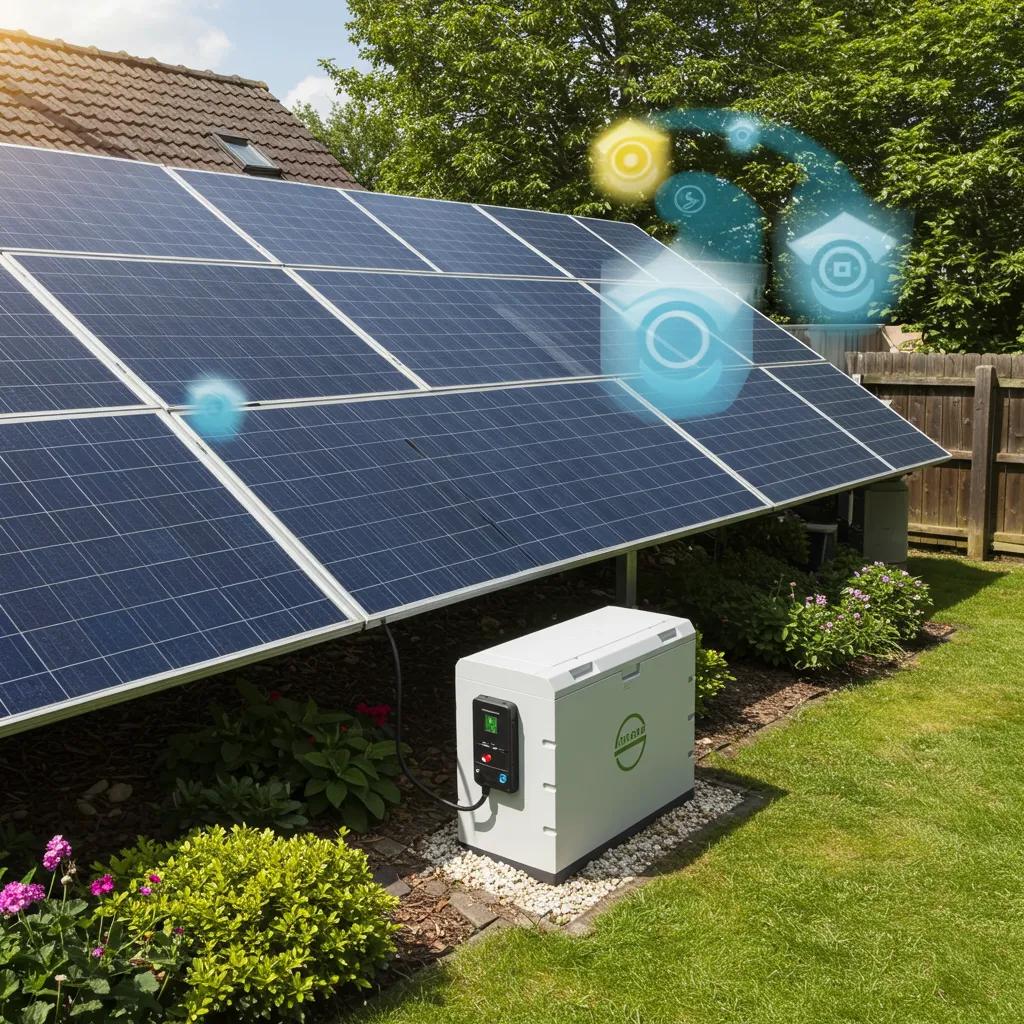
Nevada offers incentives through state and utility programs designed to encourage the adoption of battery storage alongside solar systems, enhancing grid reliability and helping customers manage their electricity bills more effectively. NV Energy and other state initiatives provide specific incentive structures, which might include credits for battery installations or performance-based payments for batteries that provide grid services or reduce peak demand charges. Combining the federal Residential Clean Energy Credit with state or utility storage incentives requires careful verification of eligibility, often depending on the technical integration and commissioning of the system. For Las Vegas homeowners, adding storage increases the initial project cost but can significantly improve returns, especially with time-of-use rates and potential future changes to net metering policies.
Are There Local Las Vegas or Clark County Solar Rebates?
Local rebates and streamlined permitting processes can help lower the upfront costs or reduce non-hardware expenses associated with solar installations. While specific local programs can change, it’s always worth checking with your city or county authorities. Some jurisdictions may offer reduced permitting fees or expedited inspection services. Local pilot programs might also provide targeted rebates or administrative support for community solar or installations aimed at low-income residents. Property owners should contact their local building department and work with installers familiar with Las Vegas and Clark County processes to discover any current local incentives. Partnering with a local installer can ensure you’re always up-to-date on municipal rebates and have a smoother permitting experience.
How Does NV Energy’s Net Metering Policy Affect Solar Customers in Nevada?
NV Energy‘s net metering policy significantly influences the financial value of the electricity your solar system sends back to the grid. This, in turn, impacts how you size your system, whether you need battery storage, and your expected payback period. Under current rules, NV Energy credits excess exported solar energy at a percentage of the retail rate. Proposed changes, expected later, may alter how exports are measured and credited. Understanding both the current credit rate and the potential future adjustments is essential for homeowners and businesses to optimize their system size and storage choices for maximum value under both current and future policies. Smart strategies like shifting your energy usage and integrating storage can help mitigate risks associated with potential changes in export crediting.
What Is the Current Net Metering Credit Rate and How Is It Calculated?
Under the current net metering rules, NV Energy credits you for the solar energy you export to the grid at a specific percentage of the retail electricity rate. This is often around 75 percent of the retail rate for crediting surplus energy, applied directly to your bill. For instance, if you export 100 kWh in a billing cycle and the retail rate is $0.12/kWh, a 75 percent credit would mean you receive $0.09/kWh, totaling $9.00 in bill credits for that exported energy. Your utility bill typically nets your total energy consumption against your total generation over the billing period, and specific tariff rules dictate whether any unused credits carry over to the next month. Always confirm the latest credit rates and billing procedures directly with NV Energy to accurately model your potential savings.
What Are the Proposed Changes to Net Metering Starting in 2026?
Proposed net metering changes could shift the calculation from hourly or monthly netting to a more granular 15-minute interval netting system. This, along with potential adjustments to credit rates, could significantly alter the value of exported energy. Fifteen-minute interval netting might reduce the value of energy exported during off-peak times, making it even more important to align your energy generation with your consumption or to use battery storage to shift energy use to higher-value periods. Potential new demand charges or different compensation formulas for exports could disproportionately affect larger systems and commercial clients. Therefore, installing your system or acquiring storage sooner rather than later might help preserve current economic benefits. Stay informed by monitoring Public Utilities Commission of Nevada (PUCN) proceedings and NV Energy‘s official filings for the final rule language.
How Can Homeowners and Businesses Maximize Savings Under NV Energy’s Net Metering?
To maximize your savings under both current and anticipated net metering rules, it’s wise to size your system to closely match your on-site energy consumption. Incorporating battery storage allows you to store solar energy generated during the day and use it during peak pricing periods. Implementing energy management strategies can also help reduce exports during times when they receive lower credits. Practical steps include scheduling appliance usage to align with peak solar production, installing smart controls for devices like HVAC and EV chargers, and designing systems with a slightly conservative export profile to avoid periods of low compensation. For businesses, strategies to mitigate demand charges and effective load management systems can protect against potential new demand-based fees. Working with an experienced solar installer is key to designing a system that fits your specific billing structure and is future-proofed against policy shifts.
- Match system size to daytime load to avoid low-value exports.
- Pair batteries with solar to store midday generation and discharge during peak pricing.
- Implement load-shifting controls for HVAC and EV charging to align with production.
How Does Net Metering Work with Solar-Plus-Storage Systems?
When you combine solar panels with battery storage, the energy flow changes significantly. Your solar generation can first charge your batteries and power your home’s immediate needs before sending any excess energy to the grid. This allows you to capture value from energy that might otherwise be exported at a lower credit rate. Battery storage enables you to discharge power during high-value billing periods, avoid exporting energy when credits are low, and even provide backup power during outages. For federal and state incentive purposes, co-located storage that meets eligibility requirements can qualify for the Residential Clean Energy Credit, provided you have documentation proving its technical and temporal integration with the solar system. System designers should carefully model dispatch strategies and rate schedules to accurately quantify the added value that storage brings.
What Are the Financial and Environmental Benefits of Going Solar in Las Vegas and Nevada?
Adopting solar energy in Las Vegas offers substantial financial advantages, including lower electricity bills and increased property value, alongside significant environmental benefits like reduced greenhouse gas emissions, which aligns perfectly with Nevada‘s renewable energy goals. You can expect multi-decade savings on your electricity bills, protection against rising energy costs, and a more attractive home for potential buyers who value lower operating expenses. Environmentally, distributed solar power contributes to cleaner air, reduces carbon emissions, and helps Nevada meet its Renewable Portfolio Standard targets. To accurately estimate these benefits, you’ll need realistic assumptions about your system size, local sunlight, net metering credits, and the incentives you can stack.
How Much Can Homeowners Save on Electricity Costs with Solar Panels?
Homeowners in Las Vegas can achieve significant lifetime savings with solar panels, depending on system size, net metering assumptions, and the incentives they utilize. For a typical 5 kW residential system, estimates often show payback periods ranging from single digits to low teens, with substantial gross savings over 25 years, especially when combined with the federal tax credit. Factors like electricity rate inflation, system degradation over time, and the inclusion of battery storage can influence these savings. It’s essential to get a site-specific production estimate and a detailed cash-flow model to project your accurate savings potential.
How Does Solar Increase Property Value in Nevada?
Installing solar panels typically boosts a home’s value by lowering future energy expenses and making the property more appealing to environmentally conscious buyers. Homes with owned solar systems are often valued more highly than those with leased systems because the financial benefits directly accrue to the owner. Studies suggest that homes with owned solar can command a premium price compared to similar homes without solar, although the exact increase depends on local market conditions, the age of the system, and its remaining lifespan. Sellers should ensure they have clear documentation of the system’s ownership, performance, and maintenance history to maximize its value. Appraisers are increasingly factoring in energy cost savings into home valuations, further supporting the resale premium for solar-equipped properties.
What Is the Environmental Impact of Solar Adoption in Nevada?
Every kilowatt of solar power installed on rooftops helps reduce reliance on fossil fuels, leading to a measurable decrease in carbon dioxide emissions and contributing to cleaner air across Nevada. While the exact emissions avoided depend on the local energy grid’s generation mix, distributed solar power in Nevada directly supports progress toward carbon-free energy targets. Beyond CO2 reduction, solar energy minimizes transmission losses and lowers exposure to local air pollutants, offering significant public health and environmental advantages for Nevada communities. Widespread solar adoption is crucial for the state to meet its renewable energy benchmarks and reduce the overall carbon intensity of its energy supply.
How Does Solar Energy Support Nevada’s Renewable Portfolio Standard Goals?
Solar energy, whether from rooftop installations or larger commercial projects, is a cornerstone of Nevada‘s Renewable Portfolio Standard (RPS) and its long-term carbon-free energy objectives. By increasing the state’s renewable energy capacity and reducing dependence on fossil fuels, solar power is instrumental in achieving ambitious targets like 50 percent renewables by 2030. Distributed solar systems contribute to local energy reliability, help manage peak demand, and complement utility-scale renewable projects, especially when paired with energy storage and grid modernization efforts. Effective policy alignment, well-designed incentives, and investments in grid infrastructure are all critical for Nevada to successfully meet these statewide goals.
For homeowners and businesses in Las Vegas ready to turn these benefits into a reality, Vegas Solar, LLC offers comprehensive solar panel installation services and a free consultation to help you assess your savings and understand how to stack incentives. Vegas Solar, LLC acts as your dedicated partner, providing expert consultation, sales, construction, installation, maintenance, monitoring, and repair services for both residential and commercial clients throughout Las Vegas and the surrounding Nevada areas. Partnering with an experienced local installer simplifies the process of documenting incentives, designing your system, and coordinating permits, ensuring your project delivers both financial and environmental returns efficiently.
What Commercial Solar Incentives and Financing Options Are Available in Nevada?
Commercial customers in Nevada have access to a robust suite of incentives and financing options, including tax abatements, accelerated depreciation, grant programs, and state-backed financing, all designed to optimize project economics. Key mechanisms include RETA for tax abatement, MACRS for federal tax relief, USDA REAP grants for eligible rural businesses, and financing options from the NevadaClean Energy Fund for specific commercial projects. Combining these with the federal Residential Clean Energy Credit (where applicable) and utility programs can significantly improve project payback periods and internal rates of return. Business owners and developers should explore pro forma scenarios that layer these incentives, tax treatments, and financing terms to make well-informed investment decisions.
How Does the Renewable Energy Tax Abatement Benefit Nevada Businesses?
RETA provides a valuable reduction in a business’s tax liability by abating certain taxes associated with renewable energy investments. This directly lowers operating costs over the abatement period, leading to improved net cash flows. Businesses can estimate these benefits by modeling the abatement terms against their project revenue and tax obligations, often resulting in enhanced internal rates of return and shorter payback periods. Eligibility criteria typically involve project size, investment thresholds, and local approvals, making early engagement with state economic development agencies and tax advisors essential for clarifying prospects. Successful applicants meticulously plan their documentation, timelines, and compliance steps to secure the abatement and integrate it seamlessly into their project financials.
What Is the Modified Accelerated Cost Recovery System for Solar?
The Modified Accelerated Cost Recovery System (MACRS) allows businesses to accelerate the depreciation of qualifying solar equipment. This front-loads tax deductions into the earlier years of the system’s life, significantly boosting after-tax cash flows in the near term. The combined effect of MACRS, any applicable bonus depreciation, and federal tax credits can dramatically improve project returns during the initial years, making solar investments more attractive from a cash-flow perspective. A simplified example demonstrates how accelerated depreciation reduces taxable income early on, generating tax savings that can be reinvested or used to finance other project components. Businesses should consult with tax advisors to accurately model MACRS schedules and confirm eligibility for bonus depreciation.
How Can USDA REAP Grants Support Rural Solar Projects in Nevada?
USDA REAP grants offer crucial funding and loan guarantees for eligible rural small businesses and agricultural operations, helping to offset the costs of renewable energy systems and improving access to capital for distributed generation projects in designated rural areas. Award amounts can vary, and these grants often require matching funds, with specific application criteria that prioritize benefits to rural communities and reductions in energy costs. Applicants should prepare comprehensive technical and financial documentation and align their projects with REAP’s application timelines to increase their chances of success. For rural Nevada businesses, REAP grants can effectively bridge funding gaps, making solar energy more attainable.
What Financing Does the NevadaClean Energy Fund Offer for Commercial Solar?
The NevadaClean Energy Fund (NCEF) provides specialized financing and capital solutions aimed at accelerating clean energy projects across the state. This includes support for projects that align with NCEF’s objectives, such as job creation and equitable energy deployment. NCEF financing can take various forms, including loans, subordinated debt, or co-investment structures, all designed to lower the cost of capital and address market gaps for commercial solar projects. Eligibility requirements and specific terms are program-dependent, so businesses should connect directly with NCEF representatives or program managers to explore tailored financing options. Incorporating NCEF support into a project’s capital stack can enable larger or more complex commercial deployments.
How Can Homeowners and Businesses Qualify for and Apply to NevadaSolar Incentive Programs?
Navigating the application process for federal, state, and local solar incentives in Nevada can be straightforward with a clear, step-by-step approach to eligibility verification and application submission. Applicants should start with an initial eligibility checklist, gather all necessary documentation, coordinate with their installer for project-specific records, and follow the precise submission procedures outlined by each agency or utility. Timelines vary significantly; some programs require pre-approval before installation, while others offer post-installation rebates or tax abatement applications. Working with a knowledgeable local installer or consultant can significantly reduce administrative complexities and help ensure your applications meet all program rules and deadlines.
What Are the Eligibility Requirements for NevadaSolar Incentives?
Across the various incentive programs, common eligibility criteria typically include system ownership or legal control, adherence to minimum or maximum system size limits, meeting income thresholds for low-income programs, and fulfilling technical requirements for energy storage integration. Some programs may have unique stipulations, such as specific residency or business location requirements, the need for matching funds, or adherence to prescribed equipment standards. Essential documentation often includes proof of purchase, interconnection approval letters, detailed invoices, and any required environmental or site assessments. Compiling these items early in the process will streamline your applications and safeguard your eligibility.
What Is the Step-by-Step Process to Apply for State and Federal Incentives?
A practical application workflow for solar incentives begins with a thorough site assessment and a detailed cost estimate. This is followed by verifying program eligibility and planning your timeline for permits and utility interconnection. Once your system is installed, gather all final invoices, commissioning documents, and utility interconnection confirmations to submit for rebates or to claim the federal tax credit on your tax return. Here’s a breakdown of the key steps:
- Assess site and estimate production with an installer or assessor.
- Verify program eligibility and reserve incentives if pre-approval is required.
- Complete permitting and utility interconnection before commissioning.
- Compile documentation and submit claims for grants, abatements, or tax credits.
- Retain records and schedule monitoring to meet any ongoing program requirements.
Where Can You Find Official Resources and Assistance for Solar Incentives?
Authoritative information and the latest updates on solar incentives are available through state energy offices, Public Utilities Commission of Nevada (PUCN) filings, and dedicated utility program pages. These sources typically provide application forms, technical standards, and program timelines relevant to Nevadasolar incentives. For local inquiries, municipal permitting offices and county assessor resources offer details on property tax treatments and permitting fee schedules. Non-profit organizations and third-party intermediaries may also provide assistance, particularly for low-income applicants through programs like Solar for All. It’s always recommended to verify the most current program specifics shortly before applying, as incentive details and availability can change.
How Does Vegas Solar, LLC Help Navigate Nevada’s Renewable Energy Policies?
Vegas Solar, LLC offers comprehensive, hands-on support throughout your solar project journey, from initial planning and incentive application to final installation and ongoing maintenance. Our services include expert consultation, thorough eligibility assessments, precise system design, assistance with permit and rebate submissions, and complete installation, monitoring, and maintenance. We help you identify which federal, state, and local incentives best suit your project, prepare all necessary documentation for tax professionals and agencies, and coordinate construction and interconnection to meet critical placed-in-service deadlines. For example, a homeowner can schedule a free consultation, Vegas Solar will assess site suitability and incentive eligibility, design and install the system, and then provide the documentation needed to claim credits and rebates. For clients in Las Vegas and surrounding Nevada areas, our practical support significantly reduces administrative burdens and increases the likelihood of securing all available incentives.
- Consultation and eligibility assessment, evaluating which incentives and programs apply.
- System design and permitting, preparing technical plans and permit submissions.
- Installation, monitoring, and maintenance, delivering full-service project execution.
What Are the Latest Updates and Future Outlook for Nevada’s Renewable Energy Policies?
The immediate future for Nevada‘s renewable energy policies is shaped by the approaching 2025 deadline for the federal tax credit and proposed changes to NV Energy‘s net metering policies, creating a sense of urgency for installations planned around 2025. Looking further ahead, Nevada‘s commitment to its Renewable Portfolio Standard (RPS) trajectory, the continued growth of the solar market in Southern Nevada, and potential regulatory or permitting challenges will all influence the landscape for both distributed and large-scale solar projects. Stakeholders should stay informed about rulemakings, legislative developments, and utility filings that could impact incentive values, interconnection timelines, and financing availability. Proactive planning and early engagement with installers and finance partners are key to mitigating risks associated with potential policy shifts.
What Are the Implications of the Federal Tax Credit Expiring After 2025?
If the full 30 percent Residential Clean Energy Credit is not extended beyond 2025, homeowners and businesses will face reduced federal support for solar installations, making near-term installation decisions financially critical. Installing before the deadline ensures you capture the highest credit value, which often improves financing options by increasing pre-tax cash flow and shortening payback periods. While alternative incentives or phased legislative changes could emerge, closely monitoring federal developments is essential. In the meantime, installers and financiers can structure projects to accelerate timelines where feasible. For many customers, acting before the 2025 cutoff remains the most reliable strategy to secure the maximum federal tax credit benefit.
How Will NV Energy’s Proposed Net Metering Changes Affect Solar Viability?
Projected changes, such as the shift to 15-minute interval netting and potential adjustments to credit formulas, could decrease the realized value of exported energy compared to current rules, particularly for systems that export significant amounts of power during midday. Modeling under these alternative credit scenarios suggests potential reductions in annualized export value, making battery storage and load-shifting strategies even more attractive. Commercial customers might experience different impacts depending on demand charge structures; mitigation strategies include deploying storage, opting for conservative system sizing, and implementing operational strategies to better align energy production with on-site demand. Staying informed about the final tariff decisions will help owners time their installations and design systems that remain economically viable.
What Are Nevada’s Long-Term Renewable Energy Goals and Initiatives?
Nevada‘s long-term vision involves aggressive renewable energy deployment and the integration of energy storage to achieve ambitious RPS and carbon-free energy targets. This vision is supported by various programmatic initiatives and infrastructure investments. State efforts are focused on expanding workforce development programs, funding solar access for low-income communities, and refining interconnection processes to accommodate the growing volume of distributed generation. Policy coordination among state agencies, regulators, and utilities aims to modernize the grid and ensure equitable deployment, all while maintaining system reliability and meeting state targets. These initiatives create both significant opportunities and important administrative requirements for project developers and owners.
How Is the Solar Market Growing in Nevada and Las Vegas?
Nevada‘s solar market has seen substantial expansion, driven by a combination of utility-scale projects and increasing residential adoption. Southern Nevada, in particular, is experiencing robust customer interest, fueled by abundant sunshine and rising electricity costs. Key market drivers include supportive state renewable energy targets, the availability of incentives, and growing familiarity among homeowners and businesses with the economics of solar-plus-storage systems. This market growth fosters competition among installers, spurs innovation in financing, and encourages program evolution, all of which can influence pricing and availability. Customers benefit from improved technology options, but should plan for potential lead times as demand continues to rise.
What Policy Challenges Could Affect Large-Scale Solar Projects in Nevada?
Large-scale solar projects often encounter regulatory, permitting, and interconnection hurdles that can lead to delays or even cancellations of planned developments. These challenges can include obtaining land-use approvals, navigating transmission constraints, and adapting to shifting policy priorities. Recent examples, both nationally and regionally, highlight how complex environmental reviews, lengthy grid interconnection queues, and local opposition can significantly slow down project timelines. Developers can mitigate these risks through early engagement with stakeholders, employing phased permitting strategies, and conservative interconnection planning. For businesses and developers operating in Nevada, understanding these potential risks and developing contingency plans is crucial for successful project delivery.
For owners ready to take advantage of current incentives and timing considerations, partnering with experienced local services that expertly manage permitting, interconnection, and incentive paperwork can significantly accelerate projects and help preserve valuable incentive amounts. Vegas Solar, LLC stands as your local, full-service partner, assisting homeowners and businesses with consultation, application support, and professional installation to help you efficiently capture incentives and operationalize your solar projects.
- Engage installers early to secure schedules and documentation.
- Model multiple policy scenarios to assess sensitivity to credit or net metering changes.
- Plan financing and tax strategies with advisors to maximize combined federal and state benefits.

